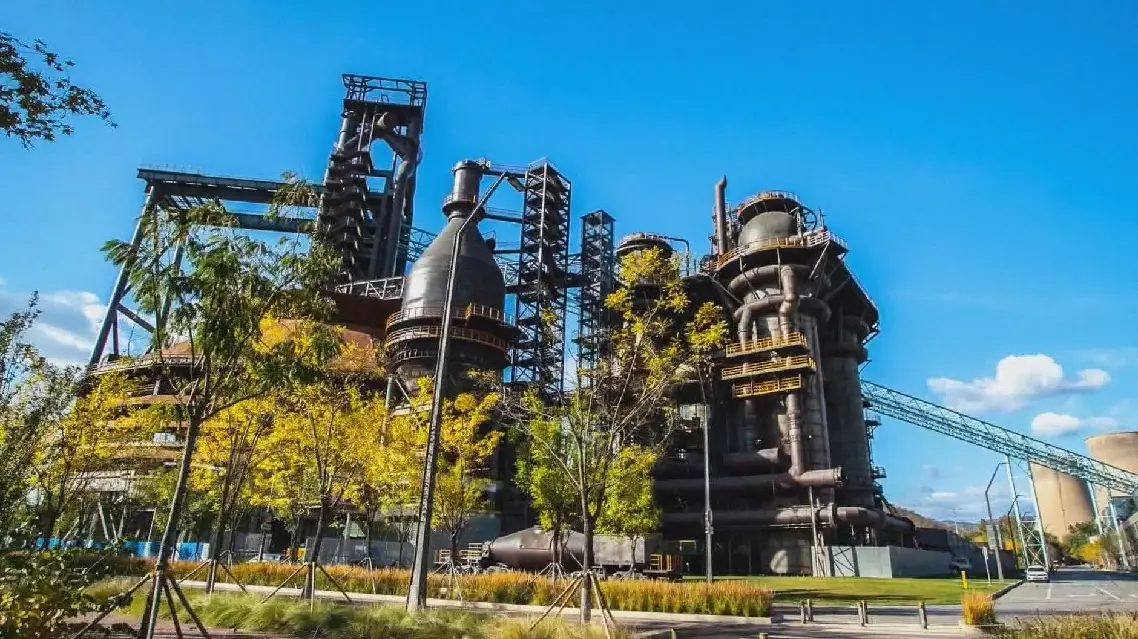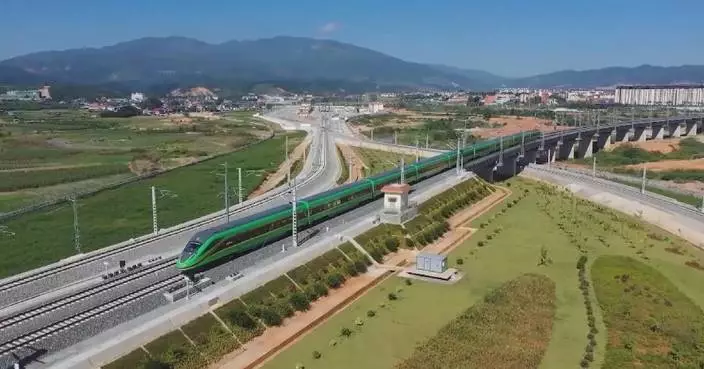The China-Laos Railway, a landmark project of the Belt and Road Initiative, has not only deepened connectivity and exchange between the two countries, but also become a catalyst for economic development, said Lao Prime Minister Sonexay Siphandone in an interview with China Media Group (CMG) aired on Friday.
Since its launch in December 2021, the 1,035-km railway linking Kunming of southwest China's Yunnan Province and Laotian, capital of Vientiane, has seen booms in both freight and passenger transport. It now connects travelers to over 560 tourist attractions along its route.
"The tourism industry is a key economic pillar in many countries. It represents a form of local service export and it's a sustainable green industry. That's why tourism goes beyond simply moving people from one place to another. It also fosters friendly relations between people from different countries," the prime minister said.
The China Railway Kunming Group Co., Ltd. said that as of March 28, it had operated 71,000 passenger train trips on the railway, serving more than 480,000 international travelers from 112 countries and regions worldwide.
Last October in Kazan, Russia, Chinese President Xi Jinping and Lao President Thongloun Sisoulith agreed on the need to further develop and strengthen the China-Laos Railway, to advance the development of the China-Laos Economic Corridor, and to turn it into a model of cooperation under the Belt and Road Initiative.
"To fully unlock the potential of the China-Laos Railway and ensure it delivers real benefits to people of both countries, our leaders have jointly called for the railway to be developed into a 'golden corridor' that improves people's lives. Guided by this shared vision, the Lao government has taken active steps to put these ideas into action. Looking back at more than three years since the railway's launch, we've focused particularly on enhancing passenger and freight services, with the aim of greatly improving convenience and efficiency," he said.
The railway has also opened up new development opportunities for regions beyond the capital city of Vientiane, with several key initiatives underway.
"First, China and Laos have already reached a consensus on jointly developing the China-Laos Border Economic Cooperation Zone (CLBECZ), which will include the areas of Boten (in Laos) and Mohan (in China). On our side, Laos has designated Boten as a special economic zone, and China is also actively strengthening cooperation at the provincial level to support this initiative. Second, Luang Prabang, a UNESCO World Heritage city, will leverage its rich cultural heritage and stunning natural landscape to focus on the growth of its service and tourism sectors. At the same time, there will be a strong emphasis on developing environmentally friendly industries to ensure sustainable development. Third, there is the Saysettha Development Zone, a comprehensive industrial park invested and developed by enterprises from Yunnan Province. Covering a planned area of 1,000 hectares, most of the zone is already completed and operational, serving primarily production and export functions," he said.

China-Laos railway fuels tourism, economic growth: Lao PM
A new travel trend of visiting factories, breweries, energy and space launch facilities is gaining popularity in China, drawing crowds of passionate tourists admiring the evolution of China's manufacturing sector.
Founded in 1919, Shougang Group is one of China's largest steelmakers, producing nearly 10 million tonnes of steel annually and employing over 100,000 people. For decades, its factory in Beijing's Shijingshan District symbolized the country's industrial might, until environmental concerns and urban development priorities prompted its closure ahead of the 2008 Beijing Summer Olympics.
These steel operations were relocated to Tangshan in adjacent Hebei Province, marking the start of a historic transformation for Shougang's main production site.
Today, Shougang Park stands as a testament to urban renewal and industrial heritage preservation. The 8.63-square-kilometer area has become a hub for culture, sports, technology and tourism.
"We paid close attention to preserving the industrial character and historical heritage during the transformation of the site," said Yu Hua, design director of Shougang Construction and Investment Company.
Massive blast furnaces, once an integral part of steel production, now host exhibitions, events and guided tours. Cooling towers and industrial silos have been converted into creative spaces, while the park's most iconic structure, the "Big Air Shougang" -- a ski jump platform for the 2022 Beijing Winter Olympics -- has solidified its place as a global landmark.
Like the Shougang Park, a steam locomotive museum transformed from an industrial heritage in northeast China's Liaoning Province also becomes a popular tourist attraction.
The Diaobingshan Steam Locomotive Museum attracts steam locomotive fanatics from both home and abroad. Moreover, it is also a shooting location for many movies and TV dramas. The museum has a collection of 21 steam locomotives, including a KD6487-type vehicle produced in 1943. All the locomotives are kept in good conditions and can even run on the tracks.
"Visiting the museum's expo park can help us understand the rapid development of China's industrial sector," said a visitor.
The industrial museums usually bear the memories of a city's industrial history and culture.
Curious tourists are uncovering the secrets of beer brewing in a beer-themed museum in Qingdao, east China's Shandong Province. The city is home to the Tsingtao Brewery, the base of a time-honored beer brand in China.
Built by Tsingtao Brewery Co., Ltd, the Tsingtao Beer Museum is located right at the site of the old factory that produced Tsingtao beer, offering visitors an honest-to-goodness taste of the city's beer culture.
In addition to historical industrial sites, travel routes to energy and spacecraft launch facilities are also popular among tourists. On a plateau in Gonghe County, northwest China's Qinghai Province, the Longyangxia Hydropower Station's solar power tower attracts numerous visitors who come to admire the breathtaking view created by over 30,000 moving mirrors surrounding the tower.
Covering an area equivalent to 30 standard football fields, the mirrors automatically rotate to follow the sun's path, focusing sunlight onto the central tower.
"I've taken my child here to experience the beauty of China's vast landscapes and gain more knowledge," said a visitor.
At the public viewing area of the Jiuquan Satellite Launch Center on April 24, the launch of the Shenzhou-20 manned spacecraft attracted numerous visitors, who were able to witness the thrilling moment of the rocket's liftoff up close.
"It's the first time I've seen the launch of a Shenzhou spaceship. It's incredibly inspiring," said a visitor watching the spacecraft launch.
"My dream of watching a manned spaceship launch finally came true," said another visitor.

Industrial tours gains traction in China




















































